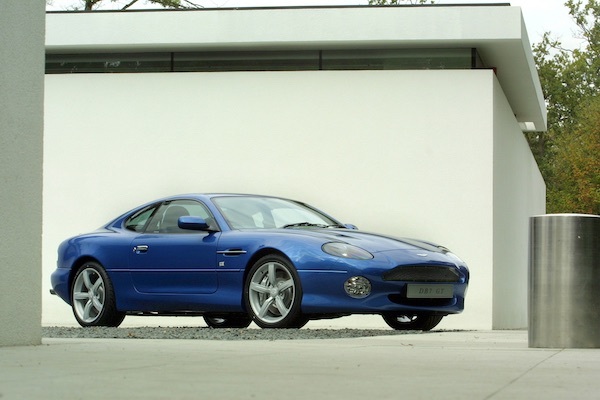The early 2000s was a strange period for car design. It was the early stage of retro styling with quite a few retro cars appearing in this timeframe. The newly developed Ford Mustang and Thunderbird, Chrysler PT Cruiser, the New Beetle and even higher-end cars like the Ford GT and BMW Z8.
While some of these designs were not that successful – the short lived last-gen Thunderbird is forgotten for its mediocrity – others were thought out and ready to become genuine icons, such as the S197 Ford Mustang, the modern hero of cheap V8 motoring.
The R50 Mini, introduced in 2001, was part of this retro wave, but it was also so much more. It was a reimagined car under BMW’s stewardship, modernising a hatchback that every other Brit has driven or been driven in – the original Mini, created in 1959 and produced for 41 years.
It was a bold attempt to modernize the beloved British car and pull some nostalgia strings in people’s hearts while creating modern charm and driving spirit. The R50 quickly became a symbol of the early 21st-century retro revival, and its influence would ripple through subsequent Mini generations.
The Legacy of the Classic Mini
The original Mini, launched in 1959, was a revolutionary car. Designed by Sir Alec Issigonis, it featured a transverse engine and front-wheel drive, maximizing interior space in a tiny footprint. Its quirky design, vivid handling and affordability made it an instant hit. It was a cultural phenomenon, beloved by everyone from working-class families to racing legends like John Cooper.
By the late 1990s, however, the Mini had grown outdated. Over the 41 year production run, ownership of the brand changed multiple times. In 2000, BMW, which had acquired the Rover Group (and thus Mini), saw an opportunity to revive the brand. The goal was clear: create a modern Mini that captured the essence of the original but met contemporary safety, performance, and comfort standards. Enter the R50.
Design and Aesthetics
The R50’s design is immediately recognizable yet refreshingly modern. Styled by Frank Stephenson, the car retained the classic Mini’s proportions, bulldog stance, round headlights, and floating roof. It was cute, compact, and packed with personality. Unlike its predecessor, which prioritized simplicity, the R50 exuded a sense of playful sophistication.
The R50 maintained the retro theme inside, with a large central speedometer paying homage to the classic Mini. However, BMW’s influence was evident in the quality of materials and fit and finish, a far cry from the utilitarian interiors of the 1960s.
Performance and Driving Experience
The R50 was available in two main variants: the Mini One and the sportier Mini Cooper. Both were powered by a 1.6-liter four-cylinder engine developed in collaboration with Chrysler. While the Mini One delivered a modest 90 horsepower, the Cooper upped the ante with 115 horsepower. That might not sound a lot, but for a car, weighing just over 1000 kg, that rev-happy 16 valve engine was pure bliss. Even though throttle response wasn’t perfect due to a fly-by-wire throttle, the power delivery was potent and it sounded like a real old school hot hatch. There was also a diesel – a Toyota supplied 1.4 litre lump from the Yaris, which is a frugal, reliable, but a bit noisy.
More of the magic of the R50 lies in its handling. With its short wheelbase, low center of gravity, and precise steering, the car is agile and lively. BMW engineers had tuned the suspension for an engaging driving experience, making the R50 a joy on winding roads. The Cooper S, introduced later, brought even more excitement with its supercharged engine producing 163 horsepower.
Reliability? Yes! Sort of…
After 24 years since the R50 was launched, their main issue, like with most cars, is rust. The shell likes to rot around the tail lights and the bottoms of the door start to go if the car has seen some harsh winters and damp weather in general. While engines are genuinely bulletproof, manual gearboxes wear out quicker than others with occasional synchro grinding. Clutches are also a weak point, along with the steering column joint. Luckily, parts are not expensive and if you find a healthy car that isn’t rusty and still has a strong gearbox, you’ll be good to go.
A Lasting Legacy of The New Mini
The R50 was a hit. A successful attempt to resurrect an automotive icon for the modern era with charming design and thrilling handling that captured the spirit of the original. A modern classic? I think so. It manages everything it was created for. It’s fun and unique, especially in supercharged S form, and it’s already hitting that 2000s nostalgia. It’s the perfect little hatch from the period when everyone was rewriting everything.
Its success is also proved by the later Mini models – the later Ones, Coopers and the Countryman, all built upon the styling and general idea of the reworked 2001 Mini. It’s also a definite future classic because successors have faced mixed reviews.
While each generation has brought advancements in performance, technology, and comfort, the ever-growing size and complexity of the Mini have led some to question whether the brand has strayed too far from its roots. Despite the criticisms of its successors, the R50 remains a landmark car. It revitalized the Mini brand and proved that a small car could be premium, fun, and stylish. It laid the foundation for the modern Mini lineup, which continues to evolve and adapt to changing market demands.
The R50 will always be remembered as the car that brought the Mini into the 21st century, preserving its charm while embracing modernity. It’s a reminder of when the Mini was at its purest – a small car with a big heart, made for the sheer joy of driving.
---
Embark on a journey to find your ideal vehicle by browsing through our Car Categories. Or, delve into our Classic Passion Shop for an exciting array of products from our partners, perfect for enthusiasts looking to enhance their collection!















